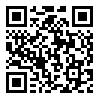2- MSc, Clinical psychology, Tehran University of Medical Sciences, Tehran, Iran.
3- Associate Professor, Department of Psychology, Faculty of Psychology, Allameh Tabatabae University, Tehran, Iran.
4- Assistant Professor, Family Research Institute, Faculty of Health Psychology, Shahid Beheshti University, Tehran, Iran.
Background: This study investigated the association between Iranian university students' perception of their fathers and their object-relations and defense mechanisms.
Materials and Methods: Participants were 438 students between 18-22 years from Tehran Police Science University, who voluntary agreed to fill the Fatherhood Scale (Dick, 2004), Bell object relation inventory(1986),and defense mechanisms style, DSQ-40.
Results: Using stepwise regression indicated that positive Parental Engagement significantly would be able to predict ALN and mature defense mechanisms and immature defense mechanisms. Positive paternal engagement & negative paternal engagement significantly predict ALN and Mature defense mechanisms. And also, negative paternal engagement, can predict IA and ECG. The good provider role subscale of fathering scale would be able to predict of SI of object relation factors and of Neurotic defense mechanism. This subscale with negative paternal engagement can predict SI
Conclusion: As a result, current study emphasize that the critical role of fathering in forming object relation and defense mechanism during development. In this processing, fathering as a facilitator lead to appropriate representation of reality in child mental structure. So, he can practice proper object relations and mature defense mechanisms
Received: 2015/04/11 | Accepted: 2016/03/30 | Published: 2016/03/30
| Rights and permissions | |
 |
This work is licensed under a Creative Commons Attribution-NonCommercial 4.0 International License. |


